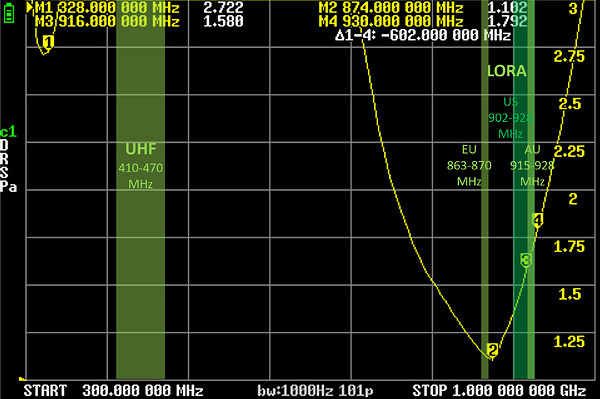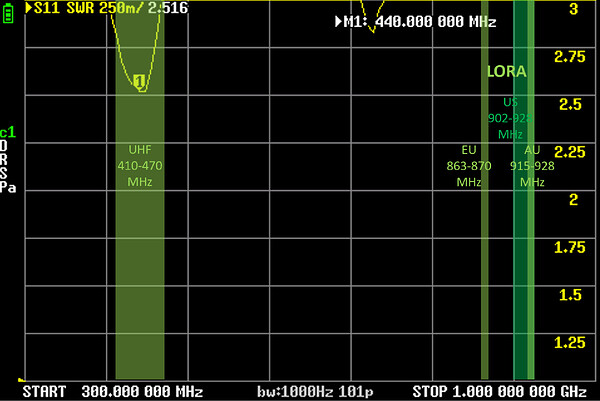Recent posts on LORA vs UHF antennas and LORA range generally prompted me to dig a little deeper under the hood for a closer look. Just sharing some of the detailed results here for your own pontification.
Disclaimer: this is what I observed with what I have on hand here, your mileage may vary with whatever you have dangling out of your own device. For the analysis I used a ground plane, the behavior when directly connected to a Reach may well vary.
Note that I measured reflected power, so the yellow curve going downward shows how well the antenna is working and at what frequencies.
LORA Antenna
My observations:
-
You can see that a LORA antenna is not going to help you with UHF, nuthin’ there.
-
I guess unsurprisingly the antenna appears optimized for its home geography, EU.
-
In the US, the lowest LORA frequencies of the wider band may theoretically work a teeny-weeny bit better for line-of-sight, but generally speaking changing frequencies across the available band would unlikely have any real effect on range. Any vegetation or geography issues would have a seriously bigger impact.
-
And please don’t blame me if you all now cluster on that lowest frequency and start hopping on each other’s bases as was recently experienced in the UK!
UHF Antenna
My observations:
-
You can see here it’s clearly not going to help you with LORA
-
This antenna appears well centered on the available bands at 440MHz.
-
The higher frequencies do appear to drop off more steeply. So for example here in Australia 460-470MHz does not appear as well served. In practice though it does work fine for me.





